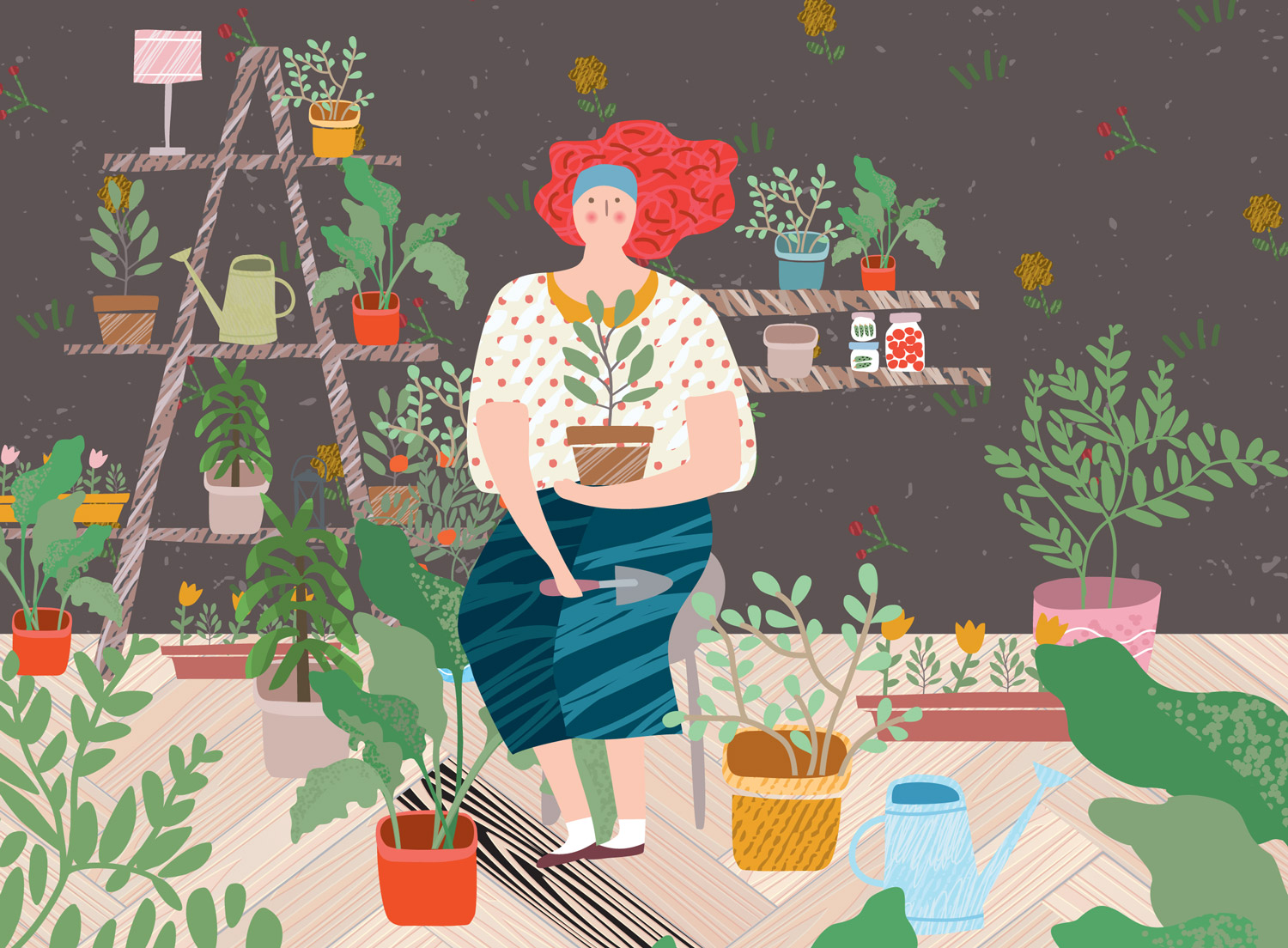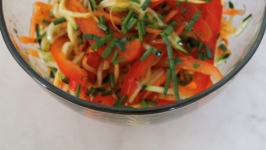The Outdoor Pantry
Around 5pm I find myself taking a mental afternoon cocktail. Sliding on my boots, I grab my wooden pocketknife and head outside to aimlessly wander my herb and vegetable gardens. I crave this habitual close to home walk-about. Drifting about amongst my green companions physically divides my day from my night, my work from pleasure, and ultimately helps me answer the eternal question: “What’s for dinner?”
Even in winter, I continue this daily tour of my gardens and am humbled and encouraged by what I encounter. January saw the emergence of cilantro, the resilience of my fall parsley, the strength of my sprawling oregano patch, now at least 15 years strong. I saw the perseverance of my pansies, still showing colors, and the offerings of my rosemary, its tiny lavender flowers calling to the sleeping mason bees. At a time of year when we believe nature is sleeping, my marjoram and English thyme are very much awake. And so, I visit and harvest the emergence, resilience, strength, and perseverance and take comfort in these offerings to me, the cook.
I marvel at the convenience of a garden, the ease at which I can gather fresh ingredients for my meals. In a country where convenience wears the crown, walking just outside your door to collect your dinner has appeal. As I stroll through my oregano, say hello to my rosemary, and lean down to pluck some marjoram, I am mindful of the practicality of a home harvest and the role it plays for the contented cook. Once satisfied by my dinner choices, I will return to my kitchen to create.
The kitchen garden, French potager, or cook’s garden are by no means new concepts. But in the current climate, they provide a revitalized vision of what is possible in our lives as consumers, and a viable option for a lifestyle many are yearning for. Kitchen gardens have waxed and waned throughout years and are often tied to fluctuations in the economy. For example, the victory gardens during World War II represented a peak time for growing your own. When harvesting our own dinner, we shrink our carbon footprint and increase our positive impact on our world. In this exercise I see a venerable tool for fighting climate change right in our own backyard.
If you are ready to commit to a kitchen garden, breathe deeply and smile. It will be one of the best projects you could ever invest in for you, and those you cook for. First and foremost, assess what you have to work with. The site for your garden should have at least 8 hours of sunlight and a water source close by like a kitchen sink, outside faucet, or rain barrel. In assessing your soil, you may want to have it tested to find out its nutrient profile and pH level. If you learn your soil is poor for gardening, don't despair. Soil amendments can be made, and container gardening is always an option. Container gardening has gained momentum in the last few years and can be a perfect solution for dwellings that offer only a deck or balcony. Next, ask yourself how much you are willing to maintain, and be honest. A small, well-tended garden will be a much better experience than a large unkept one. Once you you’ve mastered a small garden, you can always add something new each year as you continue to grow in confidence.
What will you grow in your garden? A garden is a very personal experience, so each gardener should choose plants that serve them the best and make them the happiest as a gardener and cook. Establishing a first-year garden can be both noble and challenging, but once it sets its roots, it becomes its own living entity.
A garden is many things, and can be a source of purpose and creativity. For me, my outside pantry is the quintessential symbol of freedom, accessibility, self-expression, freshness, sustenance, and provides a means for all measures of culinary whimsy.
10 Tips for Success
-
1. Sketch your ideas first.
-
2. If you plan to start plants from seed, read the package carefully for timing considerations.
-
3. Think about height when planning your layout. Taller plants on the outer edges and shorter plants near the walkways and borders allows none to be lost. Add some additional height with an arbor, trellis or tomato cage. If you have room, consider a small tree or large flowering bush for height - just make sure it does not block the sun!
-
4. Think seasons and successional planting. For example, early spring crops like sugar snaps, lettuce and pansies are done by June. Zinnias can replace pansies, green beans can replace lettuce, and a cherry tomato could replace your sugar snaps. A mix of perennials and annuals will help to avoid the barren look in the off season.
-
5. Special features make your garden unique. Remember the birds, butterflies, and bees by planting pollinator friendly plants or adding a bird feeder.
-
6. Although a kitchen garden is primarily for the cook, consider some flowers just for their beauty. Edible flowers, like nasturtiums are both beautiful and serviceable.
-
7. Consider multi-purpose plants like lavender. It’s a pollinator, has a beautiful purple flower, a perennial, and can be used for baking, tea or potpourri. Plants with healing properties, like rosemary and chamomile, add a spiritual dimension to your new landscape.
-
8. Keep your pets and children in mind - some plants are poisonous and should be avoided when young children and pets have access to your garden. Alternatively, plant for your pets - catnip is a wonderful herb, can be used in teas, pollinators love it, it’s extremely hearty and your cats will pay it a visit at cocktail hour.
-
9. Once planted, 1 to 2 inches of natural mulch will help retain moisture for your new plants and help deter weeds.
-
10. Don't go it alone. The labor and enjoyment of a garden is meant to be shared. Children love to dig in the dirt, pull radishes, pick cherry tomatoes and chase butterflies.
Suggested Plants for First Year Gardeners
- Basil - Genovese
- Chamomile - German
- Cherry Tomatoes - Sun Gold, Supersweet 100
- Chives - Common
- Cucumber Trellis - Straight 8
- Lavender - Munstead
- Nasturtium - Jewel Mix
- Parsley - Italian Flat or Curly
- Pepper - Sweet Bell, California Wonder, Jalapeño
- Radishes - Cherry Belle
- Rosemary - Arp, Tuscan Blue
- Tarragon - French
- Thyme - English, Lemon, Lime









